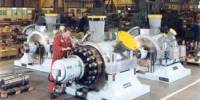The University of Tokyo, Keio University, Tokyo University of Science, and the National Institute of Information and Communications Technology have created a method for methodically determining the ideal quantum operation sequence for a quantum computer.
We must create a series of quantum operations that a quantum computer can use to carry out a task. Computer operators have until recently created their own quantum operation sequences based on accepted practices (recipes).
What we have developed this time is a systematic method that applies optimal control theory (GRAPE algorithm) to identify the theoretically optimal sequence from among all conceivable quantum operation sequences.
In the near future, it is anticipated that this technique will serve as a helpful tool for medium-scale quantum computers, enhancing their performance and lowering their environmental effect.
This result was published in the American scientific journal Physical Review A on August 23, 2022.
The development of quantum computers is anticipated to have a significant impact on society. Their advantages include lessening the environmental load by consuming less energy, expediting the hunt for materials for a cleaner environment, discovering new chemical compounds for medical application, etc.
One of the big problems for quantum computers is that the quantum state is very sensitive to noise, so it is difficult to maintain it stably for a long time (maintaining a coherent quantum state).
The operations must be finished during the time that the coherent quantum state is maintained in order to achieve the best performance. A technique to systematically find the ideal sequences was required.
The research group has created a methodical approach to pinpoint the ideal quantum operation sequence.
When a computer stores and processes information, all information is converted to a string of bits with values of 0 or 1. A human-readable computer program is transformed into a quantum operation sequence in order to be processed by a quantum computer.
The quantum operation sequence consists of 1-qubit operations and 2-qubit operations. The best sequence is the one with the fewest operations and shows the best performance (the number of red squares and green vertical lines is the smallest).
The new approach employs GRAPE, a numerical optimal control theory tool, to assess every possible combination of fundamental quantum operations. Specifically, we create a table of quantum operation sequences and the performance index (fidelity F) for each sequence, ranging from thousands to millions, depending on the number of qubits and the number of operations under investigation.
Based on the acquired information, the ideal quantum operation sequence is methodically determined. The new approach can also assess conventional recipes and analyze a comprehensive list of all quantum operation sequences.
As a result, it can be a useful tool for creating benchmarks for past and present studies on the effectiveness of few-qubit quantum algorithms. It is anticipated that the method for systematically determining the best quantum operation sequence for quantum computers would prove useful for medium-scale quantum computers.
In the near future, it is expected to improve the performance of quantum computers and contribute to reducing the burden on the environment.
We also found that there are many optimal sequences of quantum operations that are excellent. This means that a probabilistic approach could extend the applicability of this new method to larger tasks.
Large dataset analysis methods point to the possibility of combining machine learning with our innovative approach to increase the predictive capability. The study team will use the outcomes gained this time to optimize tasks derived from real quantum algorithms in the future.
















